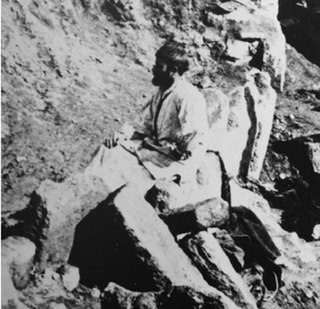Deaths
| | This section is empty. You can help by adding to it. (February 2024) |
| |||
|---|---|---|---|
| +... | |||
Below are notable events in archaeology that occurred in 1880.
| | This section is empty. You can help by adding to it. (February 2024) |
Johann Ludwig Heinrich Julius Schliemann was a German businessman and an influential amateur archaeologist. He was an advocate of the historicity of places mentioned in the works of Homer and an archaeological excavator of Hisarlik, now presumed to be the site of Troy, along with the Mycenaean sites Mycenae and Tiryns. His work lent weight to the idea that Homer's Iliad reflects historical events. Schliemann's excavation of nine layers of archaeological remains has been criticized as destructive of significant historical artefacts, including the layer that is believed to be the Homeric Troy.

Troy or Ilion was an ancient city located in present-day Hisarlık, Turkey. The place was first settled around 3600 BC and grew into a small fortified city around 3000 BC. During its four thousand years of existence, Troy was repeatedly destroyed and rebuilt. As a result, the archeological site that has been left is divided into nine layers, each corresponding to a city built on the ruins of the previous. Archaeologists refer to these layers using Roman numerals. Among the early layers, Troy II is notable for its wealth and imposing architecture. During the Late Bronze Age, Troy was called Wilusa and was a vassal of the Hittite Empire. The final layers were Greek and Roman cities which in their days served as tourist attractions and religious centers because of their link to mythic tradition.
Ur was an important Sumerian city-state in ancient Mesopotamia, located at the site of modern Tell el-Muqayyar in Dhi Qar Governorate, southern Iraq. Although Ur was once a coastal city near the mouth of the Euphrates on the Persian Gulf, the coastline has shifted and the city is now well inland, on the south bank of the Euphrates, 16 km (10 mi) from Nasiriyah in modern-day Iraq. The city dates from the Ubaid period c. 3800 BC, and is recorded in written history as a city-state from the 26th century BC, its first recorded king being King Tuttues.
Below are notable events in archaeology that occurred in 1937.
Below are notable events in archaeology that occurred in 1890.

Orchomenus, the setting for many early Greek myths, is best known today as a rich archaeological site in Boeotia, Greece, that was inhabited from the Neolithic through the Hellenistic periods. It is often referred to as "Minyan Orchomenus", to distinguish it from a later city of the same name in Arcadia.
Below are notable events in archaeology that occurred in 1873.
Below are notable events in archaeology that occurred in 1922.
Below are notable events in archaeology that occurred in 1888.
Below are notable events in archaeology that occurred in 1876.
Below are notable events in archaeology that occurred in 1871.
Below are notable events in archaeology that occurred in 1925.
Below are notable events in archaeology that occurred in 1927.
Below are notable events in archaeology that occurred in 1936.
Below are notable events in archaeology that occurred in 1935.
Below are notable events in archaeology that occurred in 1914.

Sir Charles Leonard Woolley was a British archaeologist best known for his excavations at Ur in Mesopotamia. He is recognized as one of the first "modern" archaeologists who excavated in a methodical way, keeping careful records, and using them to reconstruct ancient life and history. Woolley was knighted in 1935 for his contributions to the discipline of archaeology. He was married to the British archaeologist Katharine Woolley.

The Numismatic Museum of Athens is one of the most important museums in Greece and it houses a collection of over 500,000 coins, medals, gems, weights, stamps and related artefacts from 1400BC to modern times. The collection constitutes one of the richest in the world, paralleled by those of the British Museum in London, the Bibliothèque Nationale in Paris, the State Hermitage Museum in St. Petersburg, the Bode Museum in Berlin, and the American Numismatic Society in New York. The museum itself is housed in the mansion of the archaeologist Heinrich Schliemann, formally known as Iliou Melathron.

Panagiotis Stamatakis was a Greek archaeologist. He is noted particularly for his role in supervising the excavations of Heinrich Schliemann at Mycenae in 1876, and his role in recording and preserving the archaeological remains at the site.
{{cite book}}: CS1 maint: location missing publisher (link){{cite book}}: |website= ignored (help)